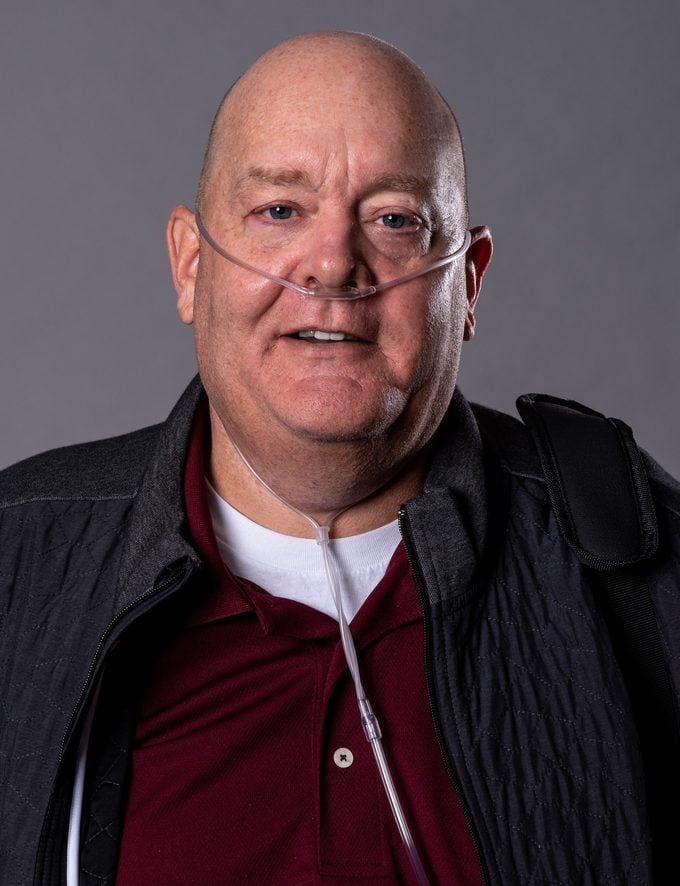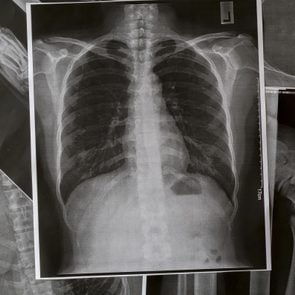He Was a First Responder on 9/11—Why He’s Telling His Story Now
Updated: Oct. 10, 2023
Tom Frey spent years recovering victims of the 9/11 attacks. His time working to bring families answers resulted in his own poor health.
The day it all began
On the morning of September 11, 2001, Tom Frey reported to duty as a detective for the New York City Police Department. Like many on that fateful morning, he never imagined it would be the day his life changed forever. After the Twin Towers collapsed, Frey was assigned to Ground Zero where he set up DNA testing sites for families to bring personal items of loved ones to be tested; Frey also worked alongside a bucket brigade for rescue and recovery. When the debris was transferred to a landfill on Staten Island, Frey spent eight months painstakingly sifting through the dust and rubble, looking for human remains.
“We worked for weeks with no days off, searching for body parts and pieces of the planes. In the very beginning, we only had paper masks at Ground Zero, but once we moved to the landfill we were given hazardous material suits. When the Red Cross brought us lunch each day we had to take the masks and hoods off to eat, and the white dust, asbestos, and whatever else from the rubble blew onto us and our food. It was really rough.” Even after the rubble had been cleared, Frey says he worked for years assisting in the identification of remains from the attacks and notifying families of victims.
“It caused a fire in my lungs”
In February 2016, Frey says everything “hit the fan.” After routine check-up and blood work with his doctor, Frey got a call from the nurse the following day. His white blood cells were elevated, and after more testing, he was diagnosed with Hodgkin’s lymphoma, a cancer common among first responders of 9/11 due to the toxic debris they took in when the towers collapsed. “I went through nine rounds of chemo and started having a little shortness of breath. I saw a pulmonologist who diagnosed me with pulmonary fibrosis—he said it was a combination of the debris dust and chemotherapy that caused it.” Frey got chemotherapy for his Hodgkin’s treatment, and part of the chemo included bleomycin—pulmonary fibrosis is a side effect of that drug. “I asked him what we do to treat it, and he said, ‘nothing.’ He said that the chemicals I breathed had created a sort of fire in my lungs, and it scarred them.”
Frey went home and researched the condition, and what he found shocked him. “It said I had three to five years to live. I thought I had written it down wrong. I went to my oncologist and told him what I read. I asked, ‘What do I do? This can’t be true.’ He said he was going to pray for me.” Pulmonary fibrosis is a progressive and fatal lung disease characterized by lung scarring that reduces the lungs’ function. Symptoms include shortness of breath, dry cough, gradual weight loss, fatigue, aching joints, and clubbing of the tips of fingers and toes. About 200,000 Americans are affected by the disease, and 50,000 are diagnosed annually. There are many forms of the disease, and it can be caused by environmental exposure to toxins and certain medications, as in Frey’s case. Treatment options include medications to slow the progression of the disease, supplemental oxygen, steroids, and clinical trials.
A new normal
After completing his chemotherapy treatment plan (minus the bleomycin), Frey began scouring the internet to learn more about pulmonary fibrosis. His searching led him to the Pulmonary Fibrosis Foundation, a site he says has made all the difference in his journey with the disease. “I saw that people on the website referred each other to the Mayo Clinic. I met with a doctor at the Jacksonville, Florida center and started a treatment plan. I started pulmonary rehabilitation and began using oxygen.” Frey’s cancer is now in remission and he will be eligible for a lung transplant once he has been cancer-free for five years. “I just keep moving. If you keep moving, you keep living.”
Many of Frey’s colleagues that responded to the World Trade Center attacks also have pulmonary fibrosis, as well as cancer due to the toxic chemicals they ingested during recovery efforts. “I know many from the police department have been diagnosed, and I’m sure the fire department is the same. A study recently came out showing that diagnoses’ are rising for the first responders of September 11.” Frey’s lung function is currently at 50 percent, and he says it’s stable—a good sign.
Today, the retired detective is an ambassador for the Pulmonary Fibrosis Foundation, traveling the country to encourage others with the disease. “It becomes an elephant in the room, you think maybe it will just go away, but it doesn’t. With every breath you know it’s there. If you have this, you have to go to the foundation’s website and get the resources. Go to the support group meetings. Doctors only have 15 minutes to offer you, but these people are going through the same thing. Some have lived with this for years. They give me hope.”
Read more about another man whose nagging cough turned out to be pulmonary fibrosis.


















 What Chemotherapy Is Really Like" width="295" height="295" />
What Chemotherapy Is Really Like" width="295" height="295" />
